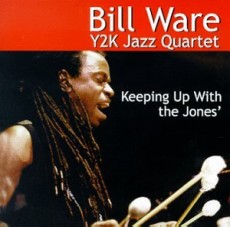
Daily Dose Of Jazz…
Bill Ware III was born William Anthony Ware III on January 28, 1959 in East Orange, New Jersey. He played bass and piano early in his career at Harlem’s Jazzmobile, prior to choosing vibraphone as his main instrument. After spending several years playing Latin jazz he formed his own Latin Jazz group, AM Sleep.
In 1987 Ware joined saxophonist Roy Nathanson and trombonist Curtis Fowlkes’ Jazz Passengers as a regular memberand by 1990 had put together a group of sidemen as the Club Bird All-Stars, who accompanied him on a tour of Japan. Stretching out to other genres he played with Groove Collective and Steely Dan during the first half Nineties.
Later in the decade Bill teamed up with fellow former Jazz Passengers, Brad Jones and E. J. Rodriguez forming the ensemble Vibes. His 2001 tribute to Duke Ellington was recorded with guitarist Marc Ribot, and Deborah Harry on his 2002 effort Four.
During the mid-2000s, he recorded several projects blending jazz with Western Classical music as well as composing five film scores with Nathanson. He recorded fourteen solo projects as a leader for AM Sleep, Knitting Factory, Cathexis, Wollenware, Random Chance and Pony Canyon record labels. Vibraphonist Bill Ware continues to compose, perform and record.
More Posts: bass,piano,vibraphone
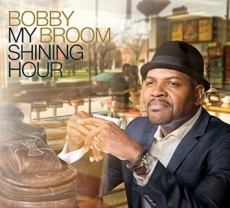
Daily Dose Of Jazz…
Bobby Broom was born Robert Broom Jr. on January 18, 1961 in New York City and began studying the guitar at age 12, taking lessons in the American Folk music style. A year later, he studied with jazz guitarist Jimmy Carter in Harlem where he took weekly lessons for the next two years.
His interest in jazz began in earnest at age 15 and as a result he began his research, study and practice of the jazz art. Broom attended the Laguardia High School of Performing Arts where he played in the jazz ensemble. He received an award for Outstanding Jazz Improvisation during his senior year.
Broom began his career while still in high school, performing at New York clubs with Charlie Parker’s pianists, Al Haig and Walter Bishop Jr. By 1977 he was playing with Sonny Rollins and Donald Byrd at Carnegie Hall. He went to Berklee School of Music in 1978, then returned to New York the next year in order to pursue his career while attending Long Island University.
At this time he began working in New York as guitarist for Art Blakey and The Jazz Messengers, Dave Grusin, Hugh Masekela and Tom Browne and landed his own recording contract with GRP Records. He earned three DownBeat Critics Poll nods from 2012 to 2014 as one of the world’s foremost jazz guitarists.
He has performed with Max Roach, Stanley Turrentine, Kenny Garrett, Miles Davis, Dr. Lonnie Smith, Charles Earland, Dr. ohn, Ron Carter, Dianne Reeves, Eon Blake, Eric Alexander, Ron Carter and Ramsey Lewis among others. He has recorded as a leader with The Deep Blue Organ Trio, The Bobby Broom Organi-Sation and his trio with Kobie Watkins and Makaya McCraven..
In the mid 1980s Broom relocated and as an educator, Broom began his work in 1982 for Jackie McLean, Director of African American Music at Studies for the Hartt School of Music at the University of Hartford. Over the years he has also been a lecturer/instructor at the American Conservatory of Music, Chicago Musical Colege-Roosevelt University, DePaul University and North Park University. He currently instructs and coaches Chicago area high school students for the Ravinia Festival Organization’s community outreach — Jazz Scholar Program, as well as the Thelonious Monk Institute.
More Posts: guitar
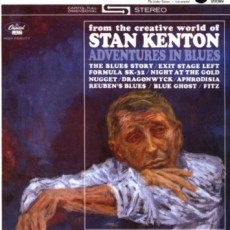
Daily Dose Of Jazz…
Stanley Newcomb Kenton was born on December 15, 1911 in Wichita, Kansas and was raised in Colorado, then in California. Conceived out of wedlock, his parents told everyone he was born on February 19, 1912 and believing this as fact well into adulthood, he recorded an album Birthday in Britain in 1973 and his grave marker even reflects this erroneous date.
Kenton learned piano as a child, influenced by Earl Hines, attending Bell High School, graduating in 1930 and while still a teenager toured with various bands. He played in the 1930s in the dance bands of Vido Musso and Gus Arnheim, but his natural inclination was as a bandleader.
In June 1941 he formed his own band, which developed into one of the best-known West Coast ensembles of the 1940s. It was later named Artistry in Rhythm after his theme song. In the mid-1940s, Kenton’s band and style became known as “The Wall of Sound”, a tag later used by Phil Spector.
Much more important in the early days as an arranger, Stan was an inspiration for his loyal sidemen in his first band such as Howard Rumsey and Chico Alvarez. Influenced by Jimmie Lunceford and his high note trumpeters and thick-toned tenors, the orchestra struggled after its initial success. Record sales were low and even being Bob Hope’s backup band was not a pleasant experience.
By 1942 Kenton was in New York City, the band was catching on with an endorsement by Fred Astaire on the Roseland Ballroom marquee. He had Art Pepper, Stan Getz, Boots Mussulli and Anita O’Day as part of the ensemble. Lyricist Joe Greene put words to the songs And Her Tears Flowed Like Wine and Don’t Let The Sun Catch You Cryin. Stan would bring in Pete Rugulo as his chief arranger along with Bob Cooper and June Christy. The band’s popularity increased with Christy hits Tampico and Across The Alley From The Alamo, and recorded the popular tune Laura, the song from the film.
Calling his music “progressive jazz,” Kenton sought to lead a concert orchestra as opposed to a dance band at a time when most big bands were starting to break up. Over the years he would employ Kai Winding, Buddy Childers, Ray Wetzel, Al Porcino, Jack Costanzo, Shorty Rogers, Shelly Manne, Bud Shank, Laurindo Almeida, Maynard Ferguson, Gerry Mulligan, Marty Paich, Bill Holman, Mel Lewis, Pete and Conte Candoli, Bill Perkins, Stan Levey, Lucky Thompson, Jack Sheldon, Frank Rosolino, Sam Noto, Carl Saunders, Lee Konitz, Chris Connor and the list goes on.
Kenton won Grammy awards in 1962 and 1963 for his Kenton’s West Side Story and Adventures In Jazz, respectively. He had several Top 40 hits, founded his own label, “The Creative World of Stan Kenton”, recording several live concerts. As an educator he encouraged big band music in high schools and colleges, instructing what he called progressive jazz, making available his charts to the bands. He donated his entire library to the music department of the University of North Texas and the Stan Kenton Jazz Recital hall is named in his honor.
Entering Midway Hospital on August 17, 1979 after suffering a stroke, pianist, arranger, composer, bandleader and educator Stan Kenton, who recorded over seven-dozen albums with an innovative and often controversial jazz orchestra, passed away on August 25, 1979.
More Posts: piano
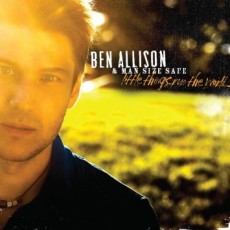
Daily Dose Of Jazz…
Ben Allison was born November 17, 1966 in New Haven, Connecticut and began guitar lessons at age nine at the Neighborhood Music School and privately with guitarist George Raccio. In the mid-Eighties he studied West African, Haitian and Cuban drumming traditions with Richard Hill and attended the ACES Educational Center for the Arts and Wilbur Cross High School. His senior high school year saw him studying with bassist Steve Swallow and too classes in 20th Century Music and Early Childhood Development at Yale University. In 1985 he attended New York University as a University scholar and pursued a degree in jazz performance and bass studies. During this period he studied with Joe Lovano, Dennis Irwin, Jim McNeely and Steve LaSpina.
By 1992, Allison and several colleagues formed the Jazz Composers Collective, a musician-run, non-profit organization dedicated to fostering the creation and performance of new music and building audiences for jazz. The Collective ran for 12 seasons, featured works of 50 composers, participation of more than 250 musicians and premiered more than 300 new works.
1996 saw the release of Ben’s debut album Seven Arrows as a leader, followed two years later with Medicine Wheel, Third Eye in 1999 and the rest is history as he has accumulated 11 albums under his name. Recording with the Collective members Frank Kimbrough, Ron Horton, Michael Blake, and Ted Nash, he would also record another dozen as co-leader or sideman with Lee Konitz, Jeremy Pelt, Larry Goldings, Mamadou Diabate, Curtis Stigers and Steve Bernstein.
As an educator, Allison began working as an adjunct professor and bass instructor at the New School University in 1996, has taught instrumental lessons and ensembles at the Third Street Music School, was a guest instructor at the Siena Jazz Foundation in Italy, the Souza Lima Ensino de Musica in Sao Paulo, Brazil and is a member of the Teaching Artists Collaborative at the Weill Music Center at Carnegie Hall, teaching music fundamentals to Harlem public school children..
Bassist, composer, bandleader, educator and activist Ben Allison is a three time Down Beat Critics Poll Rising Star, received the Bird Award, and serves on the board of the New York chapter of NARAS as VP and chairs Advocacy while continuing to perform and tour.
More Posts: bass
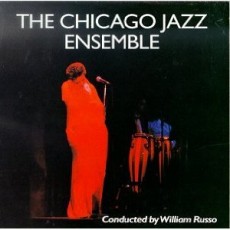
Daily Dose Of Jazz…
Bill Russo was born William Russo on June 25, 1928 in Chicago, Illinois and studied piano under Lennie Tristano. He would become an arranger and composer and by the 1950s was writing groundbreaking orchestral scores for the Stan Kenton Orchestra. He would compose for Kenton 23 Degrees N 82 Degrees W, Frank Speaking, Portrait of a Count and one of his most famous Halls Of Brass, featuring Buddy Childers, Maynard Ferguson and Milt Bernhart.
By the 60s Russo moved to England, founded the London Jazz Orchestra, and contributed to the Third Stream movement that sought to close the gap between jazz and classical music. Returning to Chicago by mid-decade he founded Columbia College’s music department, became the director of its Center for New Music, the college’s first full-time faculty member and the Director of Orchestral Studies at Scuola Europea d’Orchestra Jazz in Palermo, Italy.
Bill has composed classical symphonies, choral works, operas and several works for the theater. He has received a Koussevitsky award, had his work performed by the New York Philharmonic, the San Francisco and Chicago Symphony Orchestras, and has set music to the poetry of Gertrude Stein as well as scores for dance and film.
Russo has worked with Manny Albam, Teo Macero, Teddy Charles, Donald Byrd, Phil Woods, Bill Evans, Eddie Costa, Bob Brookmeyer, Al Cohn and Art Farmer among others. Starting the Chicago Jazz Ensemble, which is dedicated to preserving and expanding jazz, He was succeeded by Jon Faddis and it is currently under the artistic direction of Dana Hall. Trombonist, composer, arranger, eudcator and author Bill Russo passed away on January 11, 2003 after a bout with cancer. He was 74 years old.



